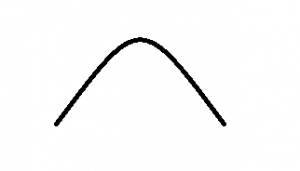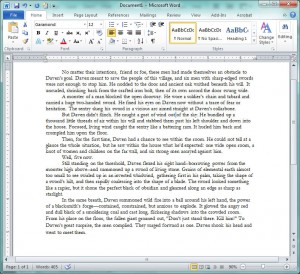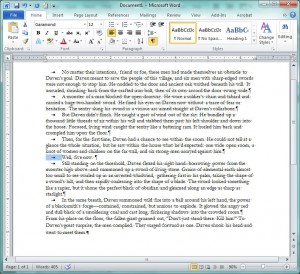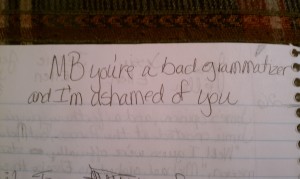 My goal with this column is to share what I’ve learned about indie publishing and establish a place for us to discuss our experiences. To kick that process off, I thought it would be smart to provide a brief overview of my impression of the current state of indie publishing.
My goal with this column is to share what I’ve learned about indie publishing and establish a place for us to discuss our experiences. To kick that process off, I thought it would be smart to provide a brief overview of my impression of the current state of indie publishing.
That’s definitely a moving target. Technology is developing quickly, and the market is in constant flux. That means all of this might be obsolete information within a matter of months (if not weeks), and a lot of it might have become dated just in the time since I last checked the pulse.
So my goal isn’t to provide a definitive truth, but to establish a known baseline (right or wrong) from which we can begin the conversation. These are the assumptions and premises on which future posts will be built. If something I say here strikes you as demonstrably wrong, educate me for the sake of future discourse. If something seems subjectively unappealing to you, bear that in mind when I make later recommendations on that subject.
Terminology
I’ll dive right into what’s probably the most fluid aspect of the whole conversation: terminology. It’s useful for us to have a common language, but there are a lot of people manipulating the terminology (for reasons good and bad) in an effort to shape public perception during this time of change.
So you’ll see advocates of traditional publishing persistently equating all forms of direct digital publishing with the parasitic industry of “vanity publishing,” as it’s been known for decades. That’s an easy parallel to make because, prior to the recent advent of direct digital publishing, the only easy way to accomplish self-publishing was through a vanity press (and at an exorbitant rate). That relationship has changed radically–most advocates of self-publishing despise vanity services just as much as the traditional folks do–but it’s in the interests of traditional publishers to maintain the outdated perception.
There’s power in words. If you’re reading this site, that’s something you already know deeply. So even as the traditional publishers are fighting for their names, the people disrupting their industry are trying to establish terms of their own. Konrath and Eisler like to refer to the traditional publishing model as “legacy publishing,” and Konrath has even made a solid case for calling traditional publishing the new “vanity.”
For the sake of our conversations, I’m going to use the phrases “traditional publishing” and “indie publishing” to refer to full-service intermediary publishing and direct-to-retailer publishing respectively. There’s some contention over the appropriateness of the “indie publishing” label (contention I’m pretty willing to dismiss), but I’m primarily using it because it covers not only “self-publishing” but also the sort of low-barrier-to-entry small press stuff that direct digital publishing enables. That is…the sort of stuff I do at Consortium Books.
I might also use the phrase “Kindle Publishing” from time to time as a sort of generic nickname for direct digital publishing. Naturally, there are a lot more players in that field than just the Kindle, but the Kindle has earned itself some spotlight, and the phrase “Kindle Publishing” is far more evocative to the casual audience than something technical like direct digital publishing.
So now we have some code words. What are we going to do with them?
Which is Better: Traditional Publishing or Indie Publishing?
I’ll save us all a lot of time pretending to provide a fair and balanced evaluation, considering the pros and cons of both sides. It’s not hard to find such posts, but I’d have to do a lot of playacting to make it seem like I endorse traditional publishing.
Indie publishing is better. Indie publishing is a lot better. If you’re already at a position in your career where traditional publishing is an option, then you’ll make a lot more money indie publishing. If you’re not at that point, you can learn on the job and make some money indie publishing, instead of spending years banging on Manhattan doors with query letters.
I’ve personally made an exception when it comes to Amazon’s 47North imprint, which feels somewhere halfway between traditional and indie publishing. The contracts are certainly more author-friendly. You can read through some of my reasoning for that, but overall–without knowing a writer’s specific situation–I’d unflinchingly recommend indie publishing over traditional publishing.
Indie publishing lets you manage your own career, keep control of your own creative works, and publish according to your own schedule. There’s some extra (non-writing) work involved, but not as much as you would think. That is, there’s more non-writing work involved in traditional publishing than you would think, so it comes out close.
Meanwhile, it’s our goal to help you out with all the non-writing work, no matter how you choose to publish. That’s why Joshua is posting advice on sales and marketing every week, Rachel is helping you with cover art design, and both Jessie and Thomas are working on editing and revision for you.
And, of course, you have me. Check back next week, and I’ll go into some detail concerning all these extra tasks–what’s required, what’s worth doing, and what surprises should you expect along the way.





















